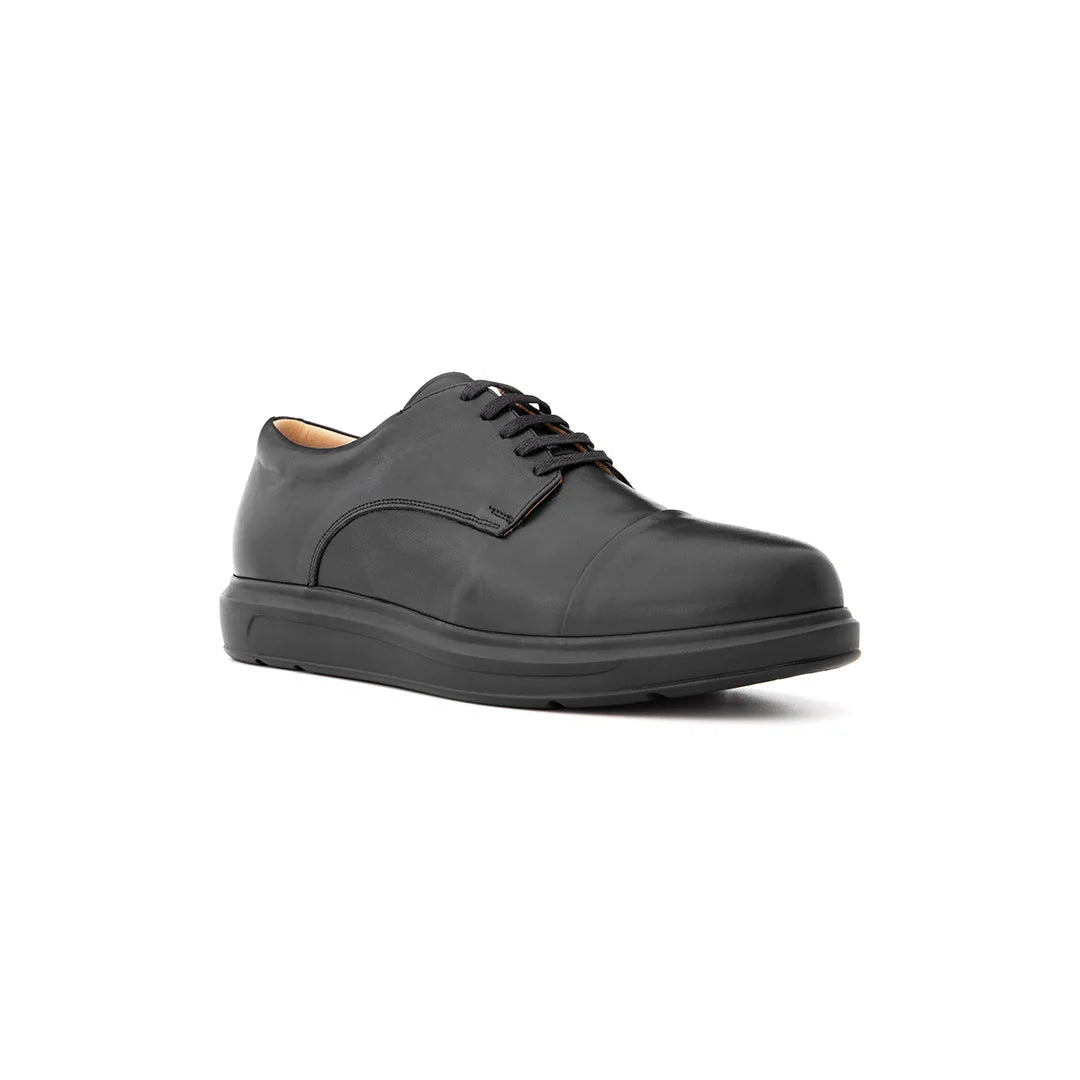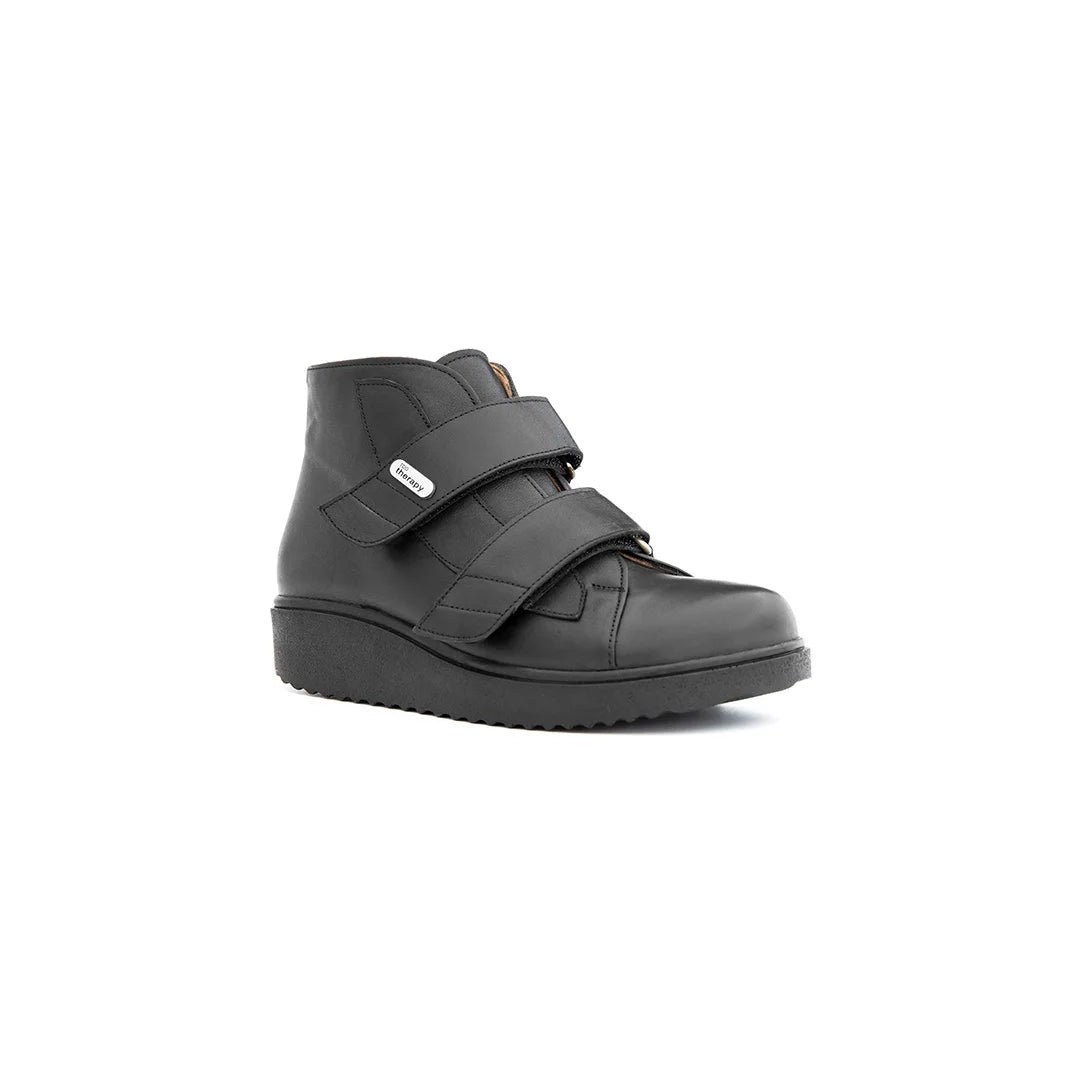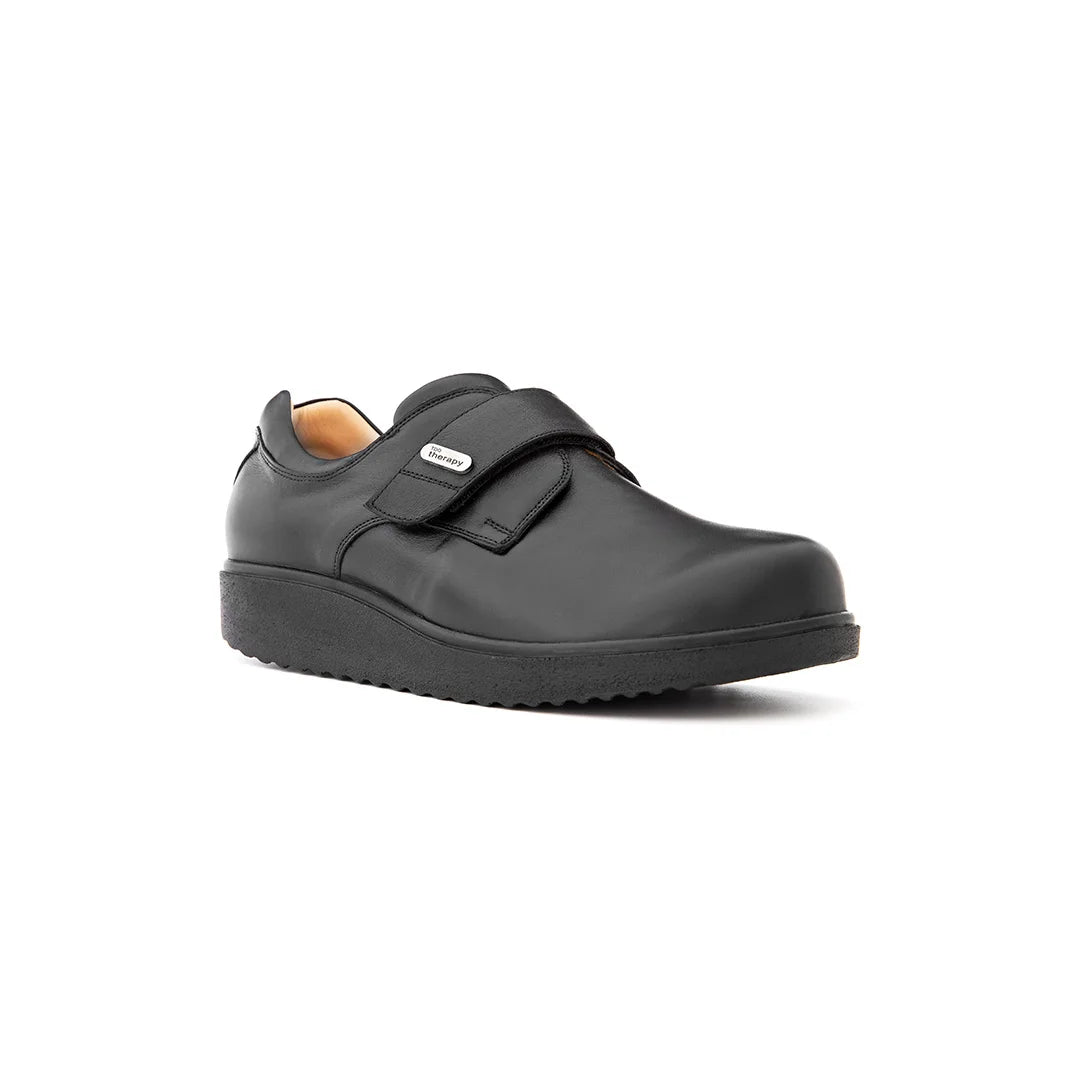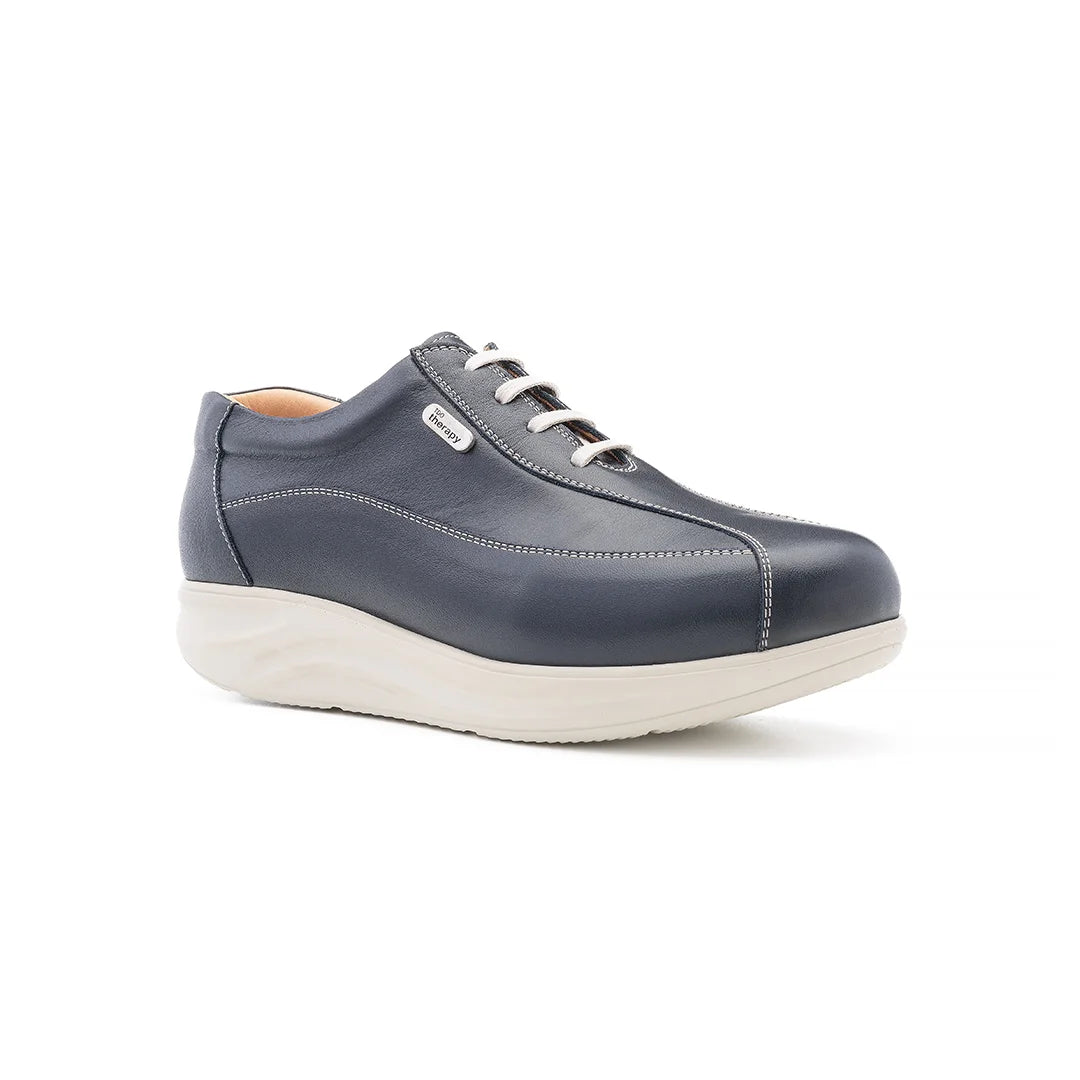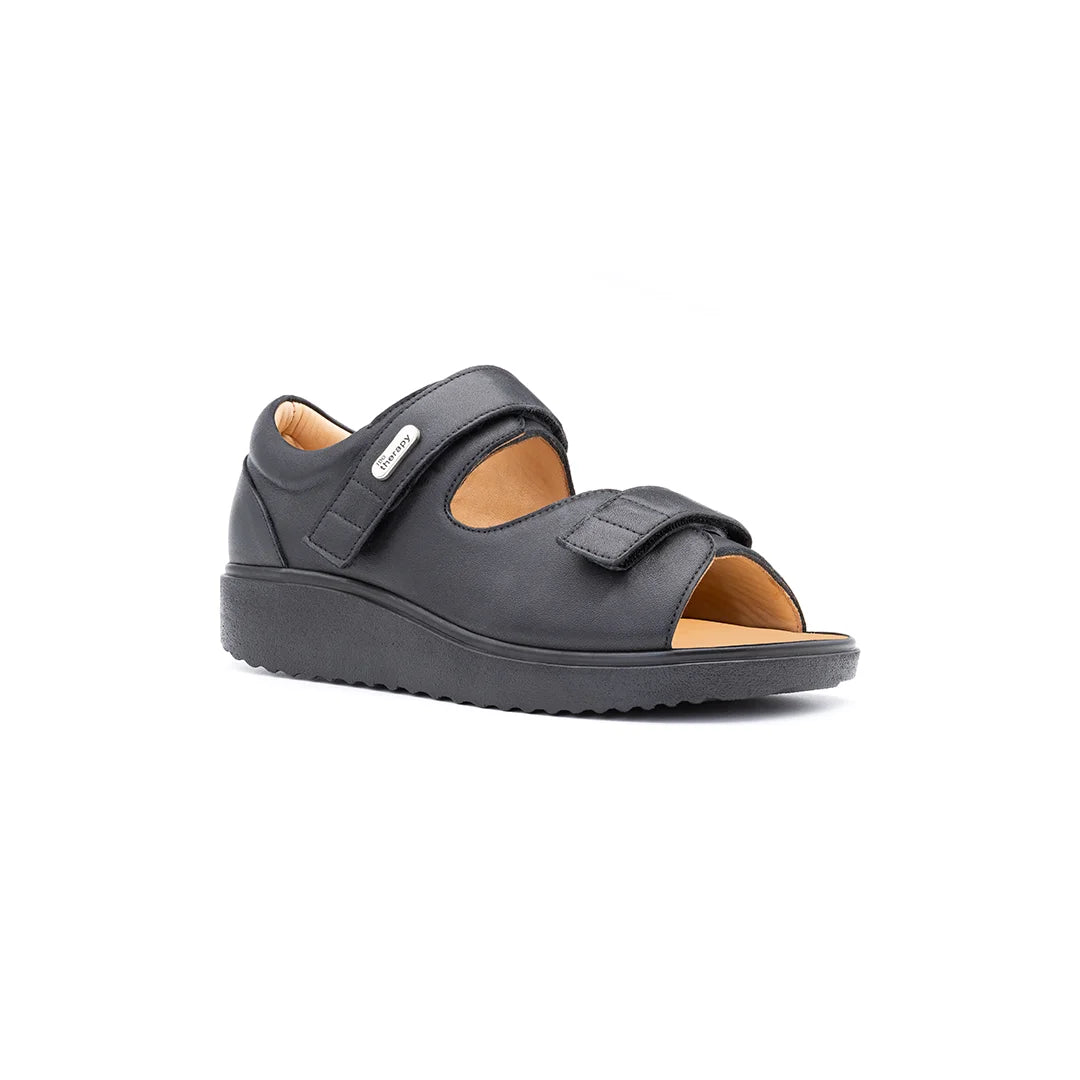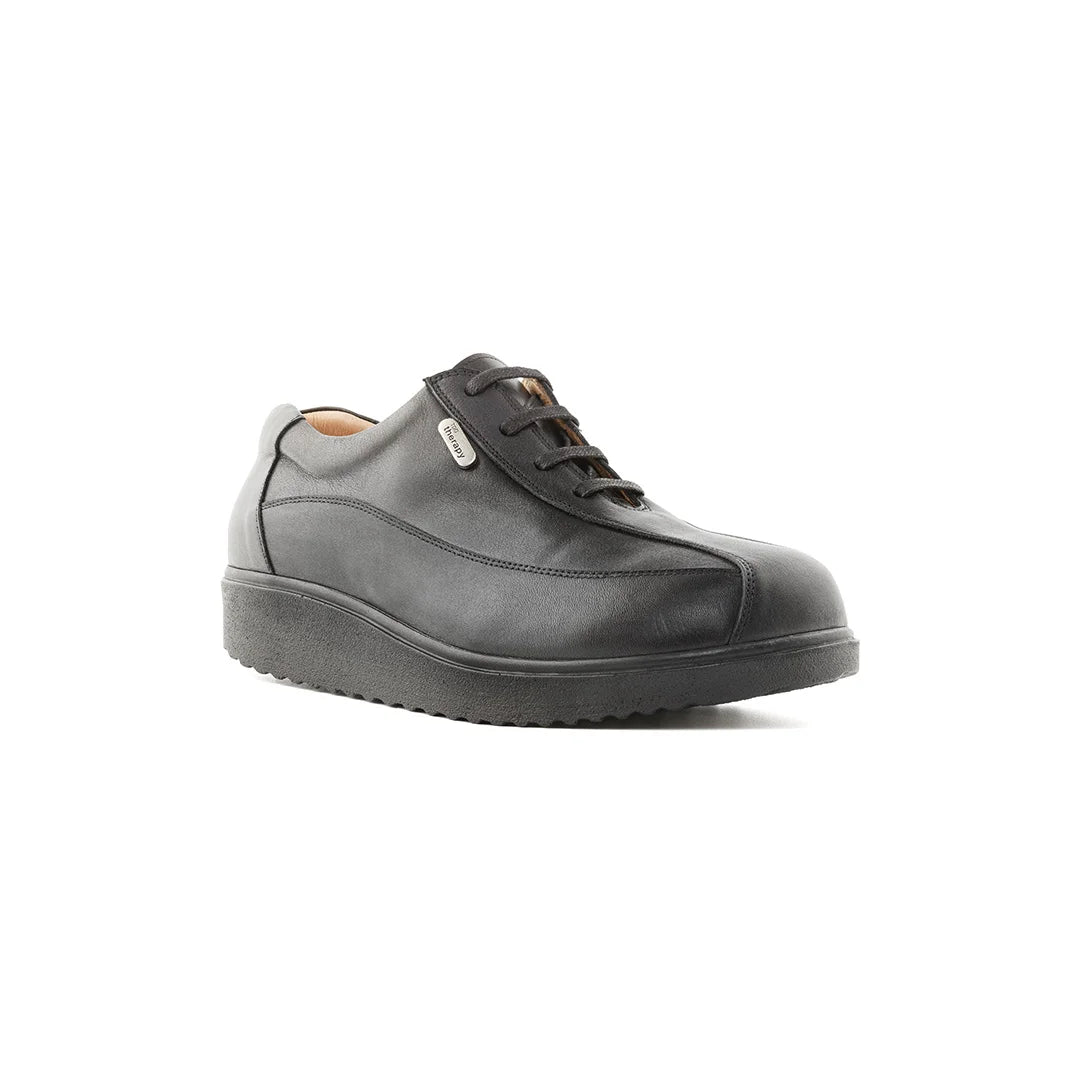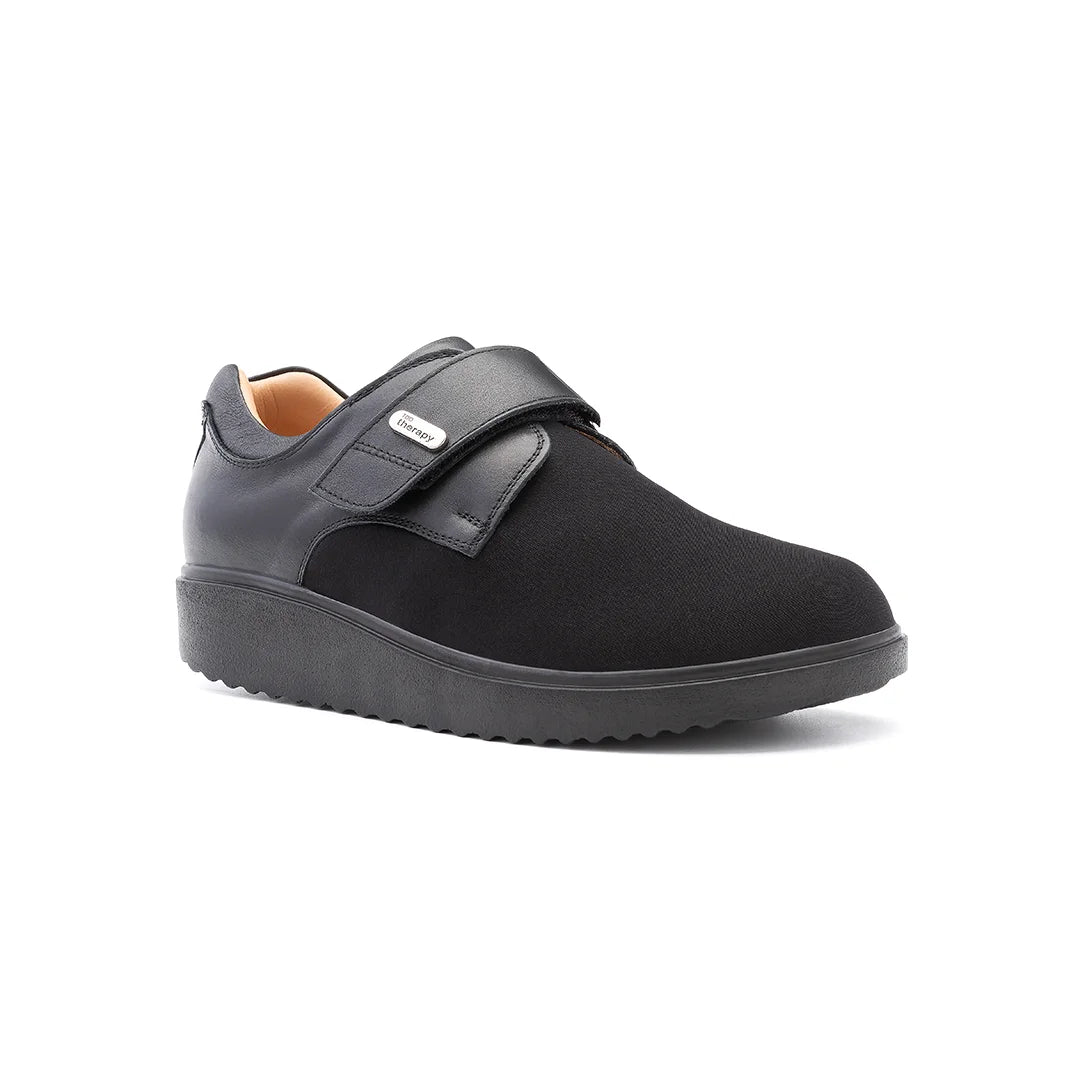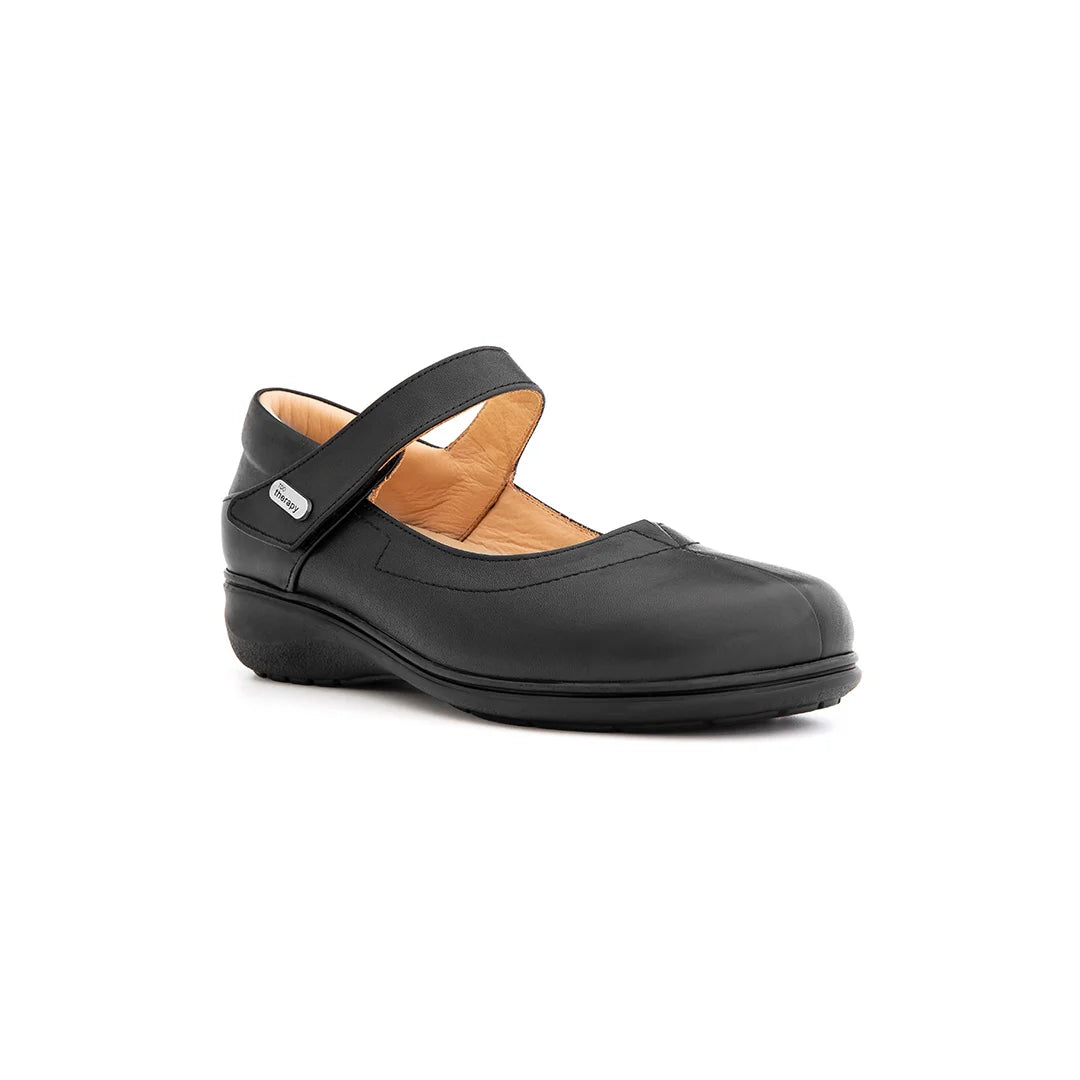Finding the right footwear can make a huge difference, especially when you're dealing with foot discomfort. For men, picking out good orthopaedic shoes for men isn't just about feeling better right now; it's about looking after your feet for the long haul. It might seem a bit much to think about, but trust me, getting the right pair can really change how you feel every day. This guide will walk you through everything you need to know, so you can pick out shoes that give you the support and comfort you deserve.
Key Takeaways
- Orthopaedic shoes are made to support your feet and help with various foot problems, unlike regular shoes that focus more on looks.
- Important features of orthopaedic shoes include good arch support, the right fit, and cushioning to absorb shock.
- Different foot conditions, like plantar fasciitis or flat feet, need specific types of orthopaedic shoes to help them.
- Before buying, it's a good idea to chat with a foot expert and think about your own foot type and daily activities.
- To make your orthopaedic shoes last, clean them properly, know when to get new ones, and store them well.
Understanding Orthopaedic Shoes For Men
Defining Orthopaedic Footwear
So, what exactly are orthopaedic shoes? Well, we reckon they're more than just your average trainers. They're specially designed to support the structure and mechanics of your feet, ankles, and legs. Think of them as footwear with built-in medical and comfort features. They're not just about looking good; they're about feeling good and preventing potential foot problems, especially if you're always on your feet.
Distinguishing From Regular Shoes
The main difference? It's all about purpose. Regular shoes often chase the latest styles, but orthopaedic shoes? They're engineered for health and comfort. They're designed to align your feet properly, spread your weight evenly, and take the pressure off those sensitive spots. It's this focus on health that makes them a must-have if you've got specific foot issues.
Benefits For Men's Foot Health

Foot problems are pretty common among us blokes, and they can really mess with your day-to-day life. Things like plantar fasciitis, bunions, and arthritis can cause a fair bit of discomfort and make it hard to get around. Orthopaedic shoes can really help tackle these issues head-on. They give you the support and cushioning you need to stay comfy and keep moving. Ignoring these problems can lead to bigger health issues down the line, so it's worth getting it sorted.
Wearing shoes that don't fit well or don't give you enough support can make existing problems worse and even cause new ones. We often put style before comfort, but it's important to remember that our feet are the foundation of our bodies. Orthopaedic shoes can improve mobility and ease pain with features like wider toe boxes and supportive heel counters. They're both preventative and therapeutic, so it's a win-win.
Key Features Of Orthopaedic Shoes For Men
Importance Of Arch Support
We reckon arch support is a big deal when it comes to orthopaedic shoes. It's all about distributing pressure evenly across your feet, which can really help if you've got plantar fasciitis or flat feet. Knowing your arch type – whether it's low, neutral, or high – is vital for picking the right shoes.
Optimal Fit And Width Considerations
Getting the right fit is super important. You don't want your shoes too tight or too loose, as that can cause all sorts of problems like blisters or rubbing. If you've got wider feet or conditions like bunions, you'll definitely want to look for shoes with extra width. Adjustable straps or laces are a bonus, as they let you tweak the fit to suit your feet.
Cushioning And Shock Absorption
Good cushioning and shock absorption can make a massive difference to how your feet feel, especially if you're on your feet all day. Look for shoes with features like padded insoles and midsoles, as these will help to reduce the impact on your joints. It's all about keeping your feet happy and pain-free.
Orthopaedic shoes are designed to actively support the mechanics of your foot, ancle, and leg. They're packed with features that provide relief and prevent potential issues, making them a great choice for men with demanding lifestyles or existing foot problems.
Choosing The Right Orthopaedic Shoes For Specific Conditions
We all know that finding the right orthopaedic shoes can feel like a mission, especially when you're dealing with specific foot issues. It's not just about comfort; it's about getting the right support where you need it most. Let's break down how to choose shoes tailored to common foot conditions.
Footwear For Plantar Fasciitis
Plantar fasciitis can be a real pain, literally. It's all about that stabbing heel pain, especially first thing in the morning. For this, we need shoes that offer excellent arch support and cushioning.
- Look for shoes with a contoured footbed to support the arch.
- Cushioning in the heel area is key to absorb shock.
- Consider shoes with a slight heel raise to reduce strain on the plantar fascia.
Wearing orthopaedic shoes with good arch support can make a huge difference in managing plantar fasciitis. It helps distribute pressure evenly across your foot, reducing the stress on the plantar fascia.
Solutions For Bunions And Hammertoes
Bunions and hammertoes require shoes with a wide toe box. The goal is to avoid any pressure or rubbing on these sensitive areas.
- Opt for shoes made from soft, flexible materials like leather or stretchable fabrics.
- Look for styles with a deep toe box to accommodate the height of hammertoes.
- Avoid shoes with pointed toes or seams that could irritate bunions.
Support For Flat Feet And High Arches
Whether you've got flat feet or high arches, the right shoes can make a world of difference. For flat feet, we need shoes that provide stability and arch support. For high arches, cushioning and shock absorption are crucial.
- Flat Feet: Look for shoes with firm midsoles and motion control features.
- High Arches: Prioritise shoes with plenty of cushioning and flexible outsoles.
- Consider custom orthotics for personalised support, no matter your arch type.
Factors To Consider Before Purchasing Orthopaedic Shoes
Consulting A Foot Health Professional
Before we even think about buying orthopaedic shoes, it's a good idea to have a chat with a foot doctor, or podiatrist. They can have a look at your feet and tell you exactly what's going on. This is especially important if you've got a specific foot problem or if you're not sure what kind of support you need. They can give you recommendations tailored to your specific needs, which is way better than just guessing.
Assessing Your Foot Type And Needs
We all have different feet, right? Some of us have flat feet, some have high arches, and some are somewhere in between. It's important to know what kind of feet we have because that will affect the type of support we need from our shoes. For example, if you've got flat feet, you'll probably want shoes with good arch support. If you have bunions, you might need shoes with a wider toe box.
Here's a few things to consider:
- What kind of arch do you have?
- Do you have any specific foot conditions like plantar fasciitis or bunions?
- Do you need extra cushioning or support?
Considering Your Lifestyle And Activities
Think about what you do every day. Are you on your feet all day at work? Do you do a lot of walking or running? Or are you mostly sitting down? The kind of shoes you need will depend on your lifestyle and activities. If you're on your feet all day, you'll want shoes that are durable and supportive. If you're doing a lot of running, you'll want shoes with good cushioning and shock absorption.
It's easy to get caught up in the latest styles or trends, but when it comes to orthopaedic shoes, comfort and support should always come first. After all, we're buying these shoes to help our feet, not to win a fashion contest.
Ensuring Proper Fit And Comfort In Orthopaedic Shoes

Finding the right orthopaedic shoes is more than just picking a style; it's about making sure they fit well and feel good on your feet. After all, what's the point of supportive shoes if they're uncomfortable to wear? We've all been there, buying shoes that look great but end up gathering dust in the cupboard because they pinch or rub. Let's avoid that with orthopaedic footwear!
Measuring Your Feet Accurately
First things first, let's get your foot size right. Don't just assume you know your size – feet can change over time, especially as we get older. The best way to ensure a good fit is to measure your feet accurately at home.
Here's a simple way to do it:
- Place a piece of paper on a hard floor against a wall.
- Stand on the paper with your heel against the wall.
- Mark the longest point of your foot on the paper.
- Measure the distance from the wall to the mark in centimetres or inches. Do this for both feet, as they might be slightly different sizes.
It's a good idea to measure your feet at the end of the day, as they tend to swell slightly. This will give you a more accurate measurement for all-day comfort.
Trying Shoes On Effectively
Okay, you've got your measurements. Now, let's talk about trying on shoes. Don't just slip them on and walk around for a few seconds. Really test them out. Here's what we recommend:
- Try shoes on later in the day when your feet are a bit more swollen.
- Wear the type of socks you usually wear with orthopaedic shoes. This makes a big difference to the fit.
- Walk around the shop (or your living room if you're buying online) for a few minutes. Pay attention to how the shoes feel on different surfaces.
Prioritising Comfort Over Style
We know, we know – style matters. But when it comes to orthopaedic shoes, comfort should always be the top priority. A stylish shoe that causes pain is no good to anyone. Look for these features:
- Adequate Arch Support: Make sure the shoe provides good support for your arch. This is crucial for distributing pressure evenly across your foot.
- Wide Toe Box: A wider toe box gives your toes plenty of room to move and prevents them from being squashed.
- Cushioning: Good cushioning absorbs shock and reduces impact on your joints.
| Feature | Importance | Benefit |
|---|---|---|
| Arch Support | High | Distributes pressure, reduces pain from plantar fasciitis or flat feet. |
| Wide Toe Box | High | Prevents pressure on bunions and hammertoes. |
| Good Cushioning | Medium | Absorbs shock, reduces impact on joints. |
Maintaining Your Orthopaedic Shoes For Longevity

We all want our orthopaedic shoes to last, right? After investing in a good pair, it's worth taking the time to look after them. With a bit of care, you can extend their life and keep your feet happy.
Cleaning And Care Tips
Keeping your shoes clean is a simple way to make them last longer. Here's what we usually do:
- Wipe them down regularly with a damp cloth to remove dirt and grime. This stops the build-up of stuff that can damage the materials.
- For leather shoes, use a good quality leather cleaner and conditioner. This keeps the leather supple and prevents it from cracking.
- If your shoes get wet, let them air dry naturally. Avoid putting them near direct heat, as this can warp the shape and damage the materials.
We've found that a little bit of regular maintenance goes a long way. It's much easier to keep shoes in good condition than to try and repair them after they've been neglected.
When To Replace Your Footwear
Even with the best care, orthopaedic shoes won't last forever. Knowing when to replace them is important for maintaining foot health. We usually look out for these signs:
- Visible wear and tear, such as cracks, holes, or worn-out soles.
- Loss of support or cushioning. If your shoes no longer feel as supportive as they used to, it's time for a new pair.
- Increased foot pain or discomfort. If you start experiencing pain or discomfort while wearing your shoes, it could be a sign that they need replacing.
Storing Your Orthopaedic Shoes
How you store your shoes can also affect their lifespan. We try to follow these tips:
- Store your shoes in a cool, dry place away from direct sunlight.
- Use shoe trees to help maintain their shape. This is especially important for leather shoes.
- Avoid stacking shoes on top of each other, as this can damage their shape and materials. Proper storage really does make a difference.
Where To Find Quality Orthopaedic Shoes For Men
Finding the right orthopaedic shoes can feel like a mission, but don't worry, we're here to guide you. It's all about knowing where to look and what to look for. Let's explore some options together.
Reputable Brands And Retailers
When it comes to orthopaedic shoes, sticking with well-known brands is generally a good shout. These brands often have years of experience and a solid reputation for quality and innovation. Think about brands that specialise in foot health and have a proven track record. Also, look out for retailers that focus on medical or therapeutic footwear – they're more likely to have knowledgeable staff who can offer advice.
Online Versus In-Store Shopping
Online shopping offers convenience, but trying shoes on in person is invaluable. If you're new to orthopaedic shoes, we recommend visiting a store where you can get a proper fitting and walk around in the shoes before buying. Online, you'll find a wider selection and often better prices, but make sure the retailer has a good return policy in case the shoes don't fit or feel right.
Reading Reviews And Recommendations
Before making a purchase, take some time to read reviews from other customers. See what people are saying about the comfort, durability, and effectiveness of the shoes. Also, don't hesitate to ask for recommendations from friends, family, or even your foot health professional. Their insights can be incredibly helpful in making the right choice.
Choosing orthopaedic shoes is a personal journey. What works for one person might not work for another. Take your time, do your research, and prioritise your foot health above all else. With the right approach, you'll find the perfect pair to keep your feet happy and healthy.
Wrapping Things Up
So, there you have it. Picking out orthopaedic shoes for men might seem a bit much at first, but it's really about getting the right fit for your feet. Think about what you need them for, what kind of foot issues you've got, and don't be afraid to try a few pairs on. It's not just about looking good; it's about feeling good too. Your feet do a lot for you every day, so giving them the right support is a pretty smart move. Trust me, once you find that perfect pair, you'll wonder how you ever managed without them. It makes a real difference to how you feel overall.
Frequently Asked Questions
What makes orthopaedic shoes different from regular shoes?
Orthopaedic shoes are special footwear made to help your feet, ankles, and legs. They're built with features like good arch support, extra room for your toes, and soft cushioning. These shoes are different from regular ones because they focus on keeping your feet healthy and comfy, not just looking trendy.
Who should think about wearing orthopaedic shoes?
Orthopaedic shoes can really help if you have foot problems like flat feet, bunions, or heel pain (plantar fasciitis). They give your feet the right support and cushioning, which can make walking much more comfortable and stop your pain from getting worse.
How do I pick the right orthopaedic shoes for me?
To find the best orthopaedic shoes, first, it's a good idea to chat with a foot doctor. They can tell you what kind of support your feet need. Then, look for shoes that fit well, have good arch support for your foot type, and plenty of cushioning. Make sure there's enough room for your toes to wiggle.
Can orthopaedic shoes be fashionable?
Yes, absolutely! Many orthopaedic shoes today are made to look good while still giving your feet the support they need. You can find stylish options that work for different outfits and occasions, so you don't have to choose between comfort and looking smart.
How should I look after my orthopaedic shoes?
To make your orthopaedic shoes last longer, keep them clean by wiping them down regularly. Let them air out after you wear them, and try not to wear the same pair every single day. Store them in a cool, dry place away from direct sunlight.
When is it time to replace my orthopaedic shoes?
You should think about getting new orthopaedic shoes when your current pair starts to show a lot of wear and tear, like flattened cushioning or worn-out soles. If your foot pain comes back, or the shoes just don't feel as supportive as they used to, it's probably time for a new pair.



